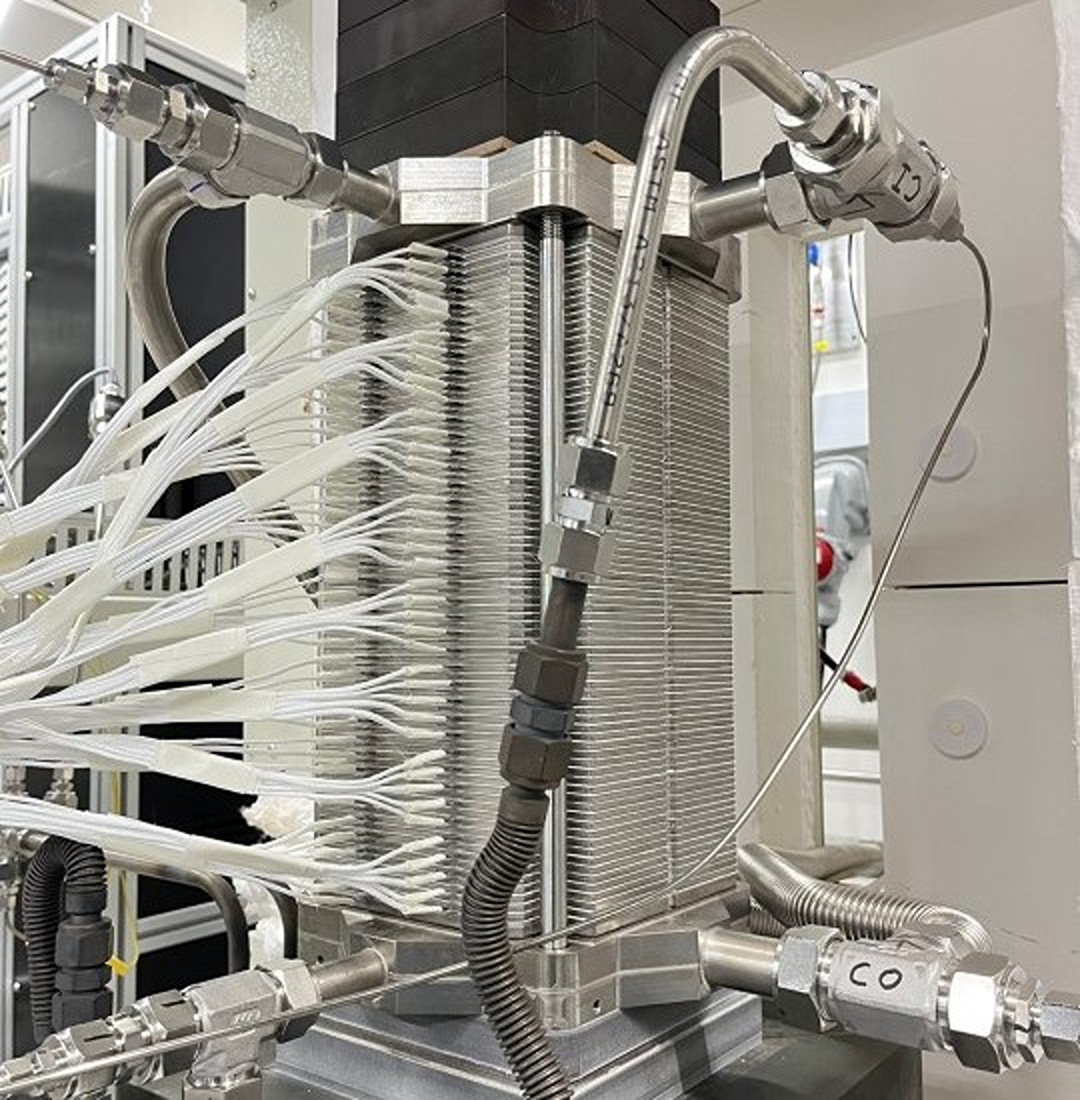The Korea Institute of Energy Research (KIER) announced a group of its scientists developed an 8 kW solid oxide electrolysis cell (SOEC) that can reportedly produce more than 5 kg of hydrogen per day.
SOEC systems usually rely on a solid oxide, or ceramic, to produce hydrogen and oxygen. They use water supplied at the cathode to separate hydrogen from water in an external separation unit, with the hydroxide ions flowing through an aqueous electrolyte to the anode to generate oxygen.
“The SOEC technology, which electrolyzes high-temperature steam into hydrogen and oxygen, is considered a high-efficiency hydrogen production technology that can reduce electricity consumption by more than 25% compared to other electrolysis methods when applied to places with a large demand for hydrogen and/or a large steam supply, such as nuclear power plants, steel mills, petrochemical plants, and ammonia manufacturing plants,” the researchers stated.
They built the SOEC stack by layering ceramic cells, separator plates, and sealing materials. Its special feature is the separator plate, for which the academics adopted a press forming method that reportedly reduces production costs and time. This technique was used to create channels that enable a proper flow of hydrogen and oxygen in the system.
“While the existing process could produce a maximum of 100 separator plates per day, using the press forming method allows for the production of more than 1,000 plates per day, thus improving both the manufacturing cost and time,” they explained.
Popular content
The group claims it was also able to maximize the contact area between the cell and the separator plate, which purportedly ensures more uniform performance, and to seal the stacked components via brazing technology. “This approach ensures that the stack can minimize hydrogen leakage even in the face of thermal shock or rapid temperature changes, thus maintaining stable performance,” it emphasized.
Through a series of tests, the system was found to provide stable operation for 2,500 h and to supply 5.7 kg of hydrogen per day.
The research institute said it is now cooperating with South Korean conglomerate Samsung Electro-Mechanics and fuel cell developer Bumhan Industries to improve the proposed manufacturing process.
This content is protected by copyright and may not be reused. If you want to cooperate with us and would like to reuse some of our content, please contact: editors@pv-magazine.com.



Every advance is worthwhile but 8kW for 5kg of H2 is not really an alternative. Per day? Even if it were an 8 hour day that’s 64kwh for 5kg – in a bus, 50 miles-ish. 64kWh would take a bus over 100 miles. Plus the energy cost of the purified water, plus transporting it.